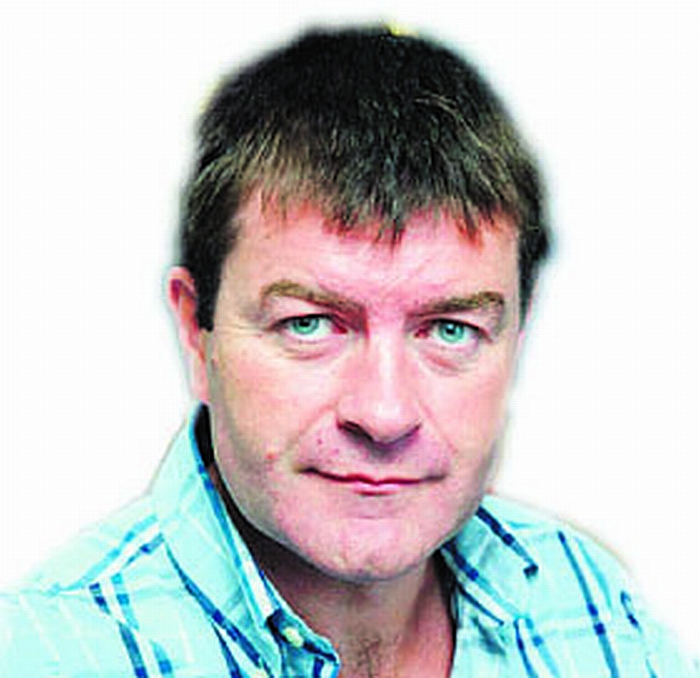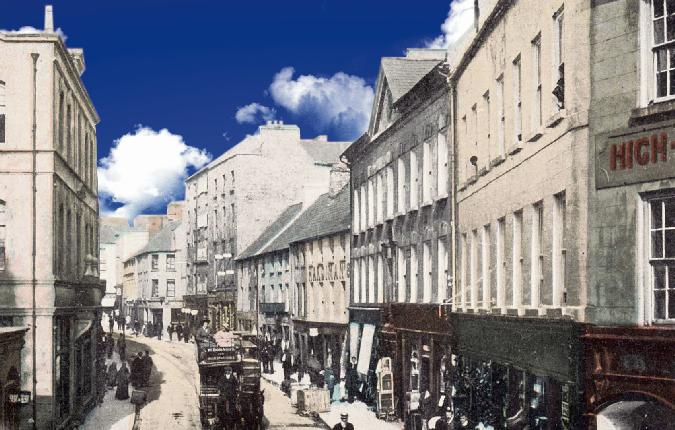Archive News
More misery for Wexford hurling as Oulart self-destruct

Date Published: {J}
YOU couldn’t blame them if the Clarinbridge players and mentors were keen viewers of the delayed Leinster senior hurling club final at Dr. Cullen Park last Sunday. Sure, the Galway champions have still a big hurdle to clear themselves later this month before they can even start focussing on the All-Ireland decider, but they knew that either O’Loughlin Gaels or Oulart-the Ballagh will almost certainly be present in Croke Park on March 17.
It’s not that the Clarinbridge camp would be getting ahead of itself, but barring Antrim’s Loughgiel Shamrocks pulling off a shock of epic proportions in the other semi-final against the Leinster champions, Galway’s standard bearers would be fully entitled to keep an eye out for what might be potentially coming down the tracks.
It’s the natural curiosity factor even if their Micheal Donoghue led team management know that the only game in town right now is against De La Salle of Waterford in Thurles on Saturday fortnight.
Frankly, Clarinbridge will hardly have been left quaking in their boots by what unfolded in Dr. Cullen Park. Oulart-the-Ballagh may have been favourites to capture the Leinster crown and even the All-Ireland title, but such is the lack of belief in Wexford hurling these days that it was always likely that they would blink first in a tight match.
For long periods, Liam Dunne’s charges were living up to their billing, but some self-inflicted blows contributed to yet another miserable outcome for the Slaney country.
They had got the perfect start when Roby Jacob fastened onto a long delivery before shooting low into the O’Loughlin Gaels net and when Nicky Kirwan pointed a 21st minute free, Oulart led by 1-4 to 0-3 and were shaping as the more convincing outfit. Indeed, I have never seen so many left-handed hurlers on a team as the Kilkenny champions had last Sunday and though they didn’t look anything special, it still didn’t prevent them from closing the gap significantly approaching the break.
Points from Peter Dowling, Mark Bergin (free) and Niall McEvoy left them only one behind before Jacob spurned a glorious opportunity to send the Oulart men to the dressing rooms on a high. Incredibly, not alone did the Wexford county man fail to register a score, he didn’t even hit the target as his penalty effort was driven wide. That must have been demoralising for their hard-working squad in a match which though competitive was nothing out of the ordinary.
To Oulart’s credit, they regrouped well and with midfielder David Redmond firing over three excellent long range efforts, they had regained a four point lead by the 40th minute and were back in the driving seat. It was hard to see O’Loughlin Gaels pulling the game out of the fire at this stage, but typical of a Kilkenny team they gradually worked their way back into the contest with the move of a previously subdued Martin Comerford out the field helping to turn things around although Oulart also began shooting themselves in the foot.
Apart from errant free-taking, the dismissal of wing back Lar Prendergast on a straight card meant they were short-staffed when the Kilkenny men upped the ante in the final quarter. Over the last 20 minutes Oulart could only manage a solitary score, Kirwan’s 54th minute free, as O’Loughlin’s greater physicality and numerical advantage began to turn the game on its head. They finished with a flurry of points, including two from substitute Seamie Cummins, to emerge comfortable 0-14 to 1-8 winners in the end.
For more, read this week’s Connacht Tribune.
Galway in Days Gone By
The way we were – Protecting archives of our past

People’s living conditions less than 100 years ago were frightening. We have come a long way. We talk about water charges today, but back then the local District Councils were erecting pumps for local communities and the lovely town of Mountbellew, according to Council minutes, had open sewers,” says Galway County Council archivist Patria McWalter.
Patria believes we “need to take pride in our history, and we should take the same pride in our historical records as we do in our built heritage”. When you see the wealth of material in her care, this belief makes sense.
She is in charge of caring for the rich collection of administrative records owned by Galway County Council and says “these records are as much part of our history as the Rock of Cashel is. They document our lives and our ancestors’ lives. And nobody can plan for the future unless you learn from the past, what worked and what didn’t”.
Archivists and librarians are often unfairly regarded as being dry, academic types, but that’s certainly not true of Patria. Her enthusiasm is infectious as she turns the pages of several minute books from Galway’s Rural District Councils, all of them at least 100 years old.
Part of her role involved cataloguing all the records of the Councils – Ballinasloe, Clifden, Galway, Gort, Loughrea, Mountbellew, Portumna and Tuam. These records mostly consisted of minutes of various meetings.
When she was cataloguing them she realised their worth to local historians and researchers, so she decided to compile a guide to their content. The result is For the Record: The Archives of Galway’s Rural District Councils, which will be a valuable asset to anybody with an interest in history.
Many representatives on these Councils were local personalities and several were arrested during the political upheaval of the era, she explains.
And, ushering in a new era in history, women were allowed to sit on these Rural District Councils – at the time they were not allowed to sit on County Councils.
All of this information is included in Patria’s introductory essay to the attractively produced A4 size guide, which gives a glimpse into how these Rural Councils operated and the way political thinking changed in Ireland during a short 26-year period. In the early 1900s, these Councils supported Home Rule, but by 1920, they were calling for full independence and refusing to recognise the British administration.
“I love the tone,” says Patria of the minutes from meetings. “The language was very emotive.”
That was certainly true of the Gort Rural District Council. At a meeting in 1907, following riots in Dublin at the premiere of JM Synge’s play, The Playboy of the Western World the councillors’ response was vehement. They recorded their decision to “protest most emphatically against the libellous comedy, The Playboy of the Western World, that was belched forth during the past week in the Abbey Theatre, Dublin, under the fostering care of Lady Gregory and Mr Yeats. We congratulate the good people of Dublin in howling down the gross buffoonery and immoral suggestions that are scattered throughout this scandalous performance.
For more from the archives see this week’s Tribunes here
Archive News
Galway have lot to ponder in poor show

Date Published: 23-Jan-2013
SLIGO 0-9
GALWAY 1-4
FRANK FARRAGHER IN ENNISCRONE
GALWAY’S first serious examination of the 2013 season rather disturbingly ended with a rating well below the 40% pass mark at the idyllic, if rather Siberian, seaside setting of Enniscrone on Sunday last.
The defeat cost Galway a place in the FBD League Final against Leitrim and also put a fair dent on their confidence shield for the bigger tests that lie ahead in February.
There was no fluke element in this success by an understrength Sligo side and by the time Leitrim referee, Frank Flynn, sounded the final whistle, there wasn’t a perished soul in the crowd of about 500 who could question the justice of the outcome.
It is only pre-season and last Sunday’s blast of dry polar winds did remind everyone that this is far from summer football, but make no mistake about it, the match did lay down some very worrying markers for Galway following a couple of victories over below par third level college teams.
Galway did start the game quite positively, leading by four points at the end of a first quarter when they missed as much more, but when Sligo stepped up the tempo of the game in the 10 minutes before half-time, the maroon resistance crumbled with frightening rapidity.
Some of the statistics of the match make for grim perusal. Over the course of the hour, Galway only scored two points from play and they went through a 52 minute period of the match, without raising a white flag – admittedly a late rally did bring them close to a draw but that would have been very rough justice on Sligo.
Sligo were backable at 9/4 coming into this match, the odds being stretched with the ‘missing list’ on Kevin Walsh’s team sheet – Adrian Marren, Stephen Coen, Tony Taylor, Ross Donovan, David Kelly, David Maye, Johnny Davey and Eamon O’Hara, were all marked absent for a variety of reasons.
Walsh has his Sligo side well schooled in the high intensity, close quarters type of football, and the harder Galway tried to go through the short game channels, the more the home side bottled them up.
Galway badly needed to find some variety in their attacking strategy and maybe there is a lot to be said for the traditional Meath style of giving long, quick ball to a full forward line with a big target man on the edge of the square – given Paul Conroy’s prowess close to goal last season, maybe it is time to ‘settle’ on a few basics.
Defensively, Galway were reasonably solid with Gary Sice at centre back probably their best player – he was one of the few men in maroon to deliver decent long ball deep into the attacking zone – while Finian Hanley, Conor Costello and Gary O’Donnell also kept things tight.
For more, read this week’s Connacht Tribune.
Archive News
Real Galway flavour to intermediate club hurling battle in Birr

Date Published: 23-Jan-2013
images/files/images/x3_Courthouse.jpg










